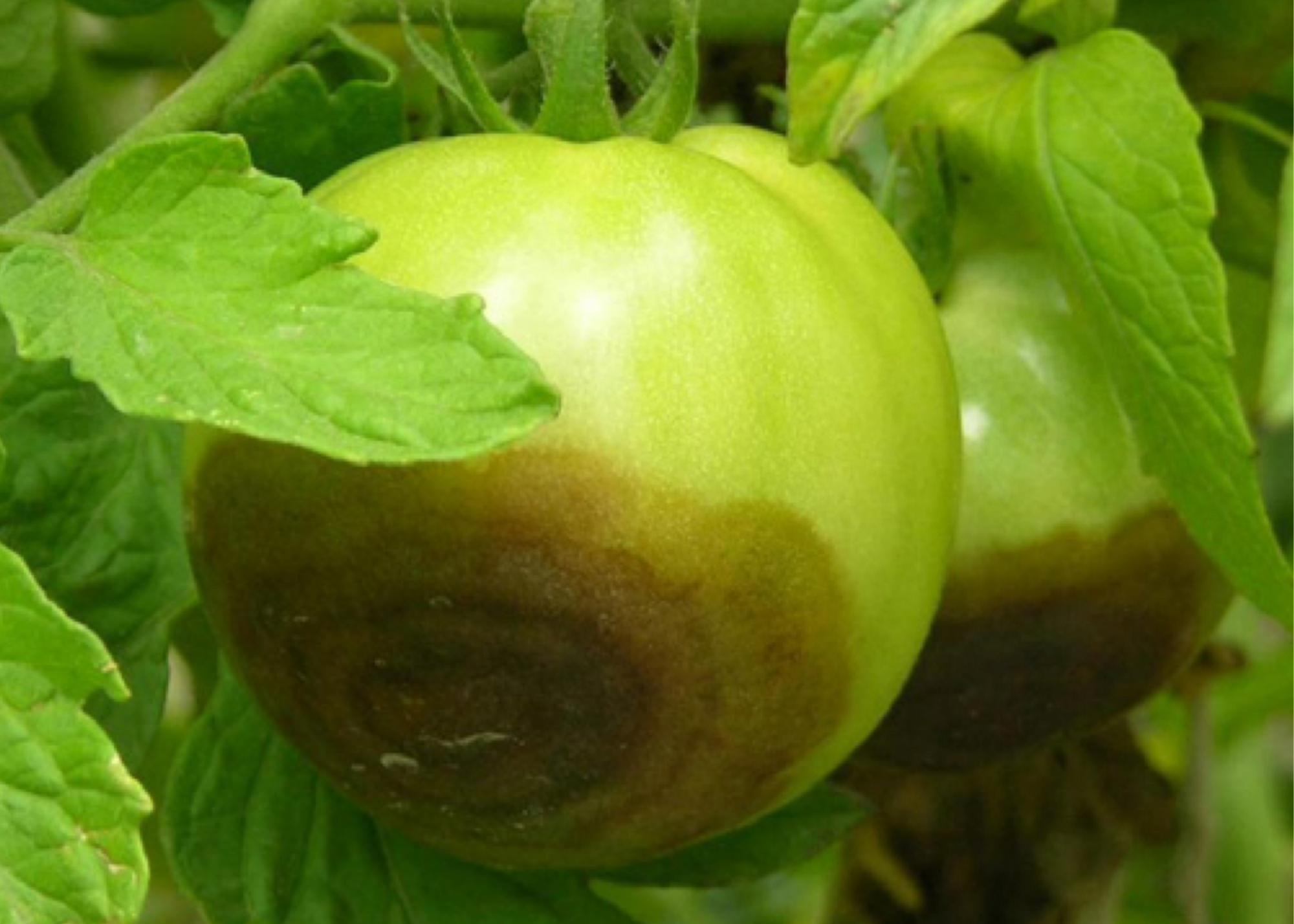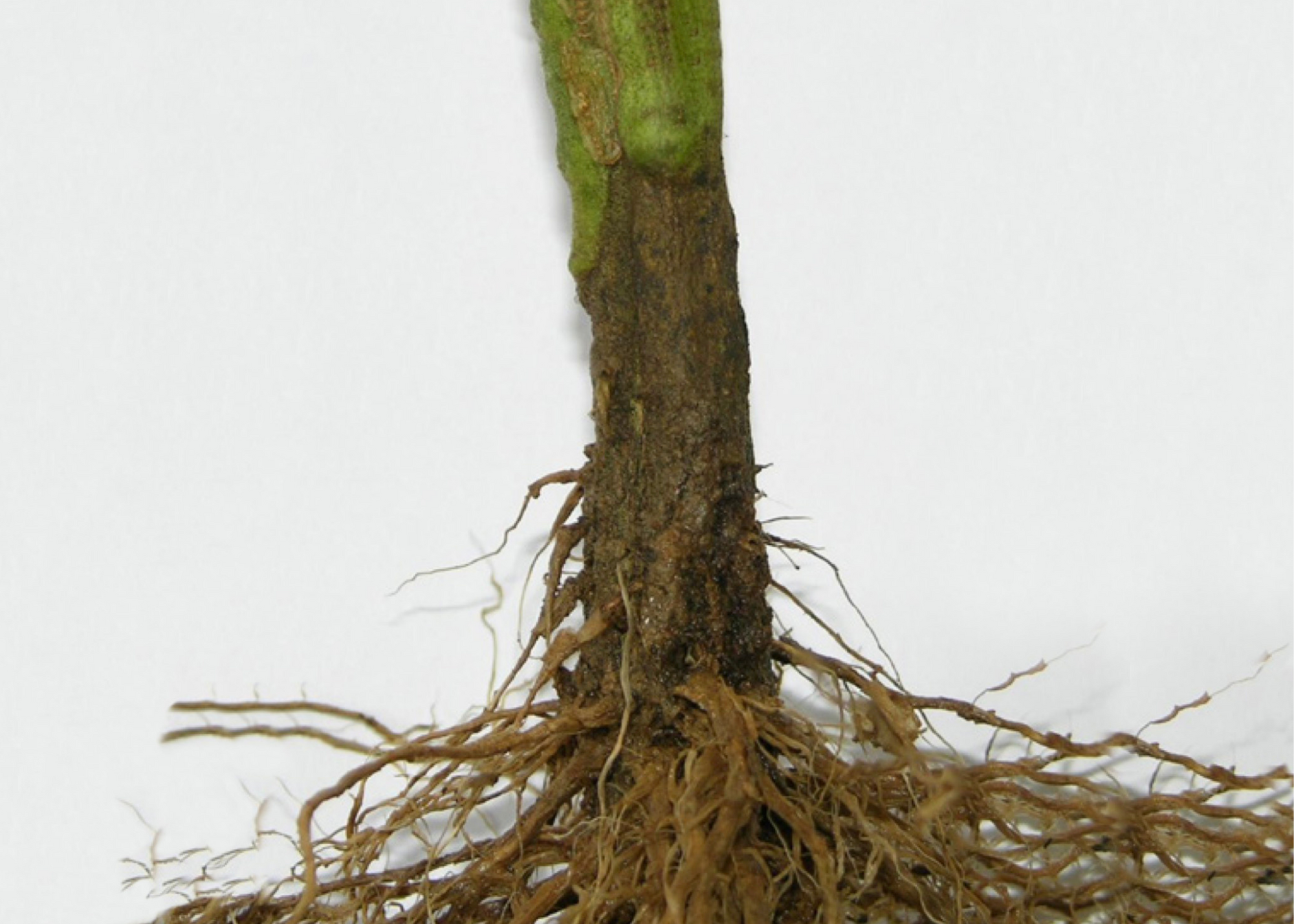4 Common Tomato Diseases
Tomatoes are a popular crop for home gardeners, but they can be tricky to grow. Insects, disorders, and diseases can all cause problems with tomatoes.
Keep an eye on your plants so you can catch problems early and reap a bountiful harvest.
There are a multitude of diseases that can occur on tomatoes, but the following four are commonly seen in early summer when conditions are right:
Buckeye rot

- Develops when humidity is high and temperatures are warm.
- The pathogen may also affect peppers and eggplant, causing Phytophthora blight.
- Commonly occurs on low-hanging fruit that comes into contact with infected soil.
- Most severe in very moist soils.
- Look for brown, oily lesions on the fruit only. The lesions will enlarge and form concentric circles. A white, cottony fungal growth may also form on the lesion in very moist conditions. Foliage is not affected.
Early Blight

- Develops when humidity is high and temperatures are mild.
- Affects the leaves, stems, and fruit of field-grown plants.
- The pathogen is seedborne and can survive on infected plant debris.
- Watch for circular or elongated, brown lesions with concentric rings on leaves, stems, and fruit. Lesions will enlarge over time and surrounding tissues become chlorotic, or yellowed. Symptoms often first begin on the lower leaves.
Southern Blight

- Develops in high temperatures and moist conditions.
- The pathogen can survive in soil and plant material for years and can be easily spread through the movement of both.
- Watch for a sudden and permanent wilt of the plant along with a brown to black lesion that girdles the stem near the soil line. In very moist conditions, white, fungal mycelia may appear on the stem lesion followed by round, tan to brown sclerotia, which look like raised bumps.
- Fruits can also be infected if they come in contact with the fungus, which often occurs when fruits touch infested soil. Fruits will first appear sunken and yellow and later become water-soaked and soft before collapsing. White mycelia and sclerotia may also develop on infected fruits. Many vegetables can be affected by southern blight.
Bacterial Wilt

- Develops when soil temperatures and moisture levels are high.
- It is difficult to manage because the pathogen can survive for long periods of time in the soil.
- Peppers are also commonly infected.
- The pathogen is spread by contaminated water, tools, equipment, and workers.
- Watch for sudden wilting and death of the plant without any symptoms of leaf yellowing or plant tissue death beforehand. You may sometimes see a brown lesion on the outside of the stem near the bottom of the plant. The inside of the stem may be dark and water-soaked or hollow. Horizontally cut steams often show profuse bacterial streaming. A quick test can easily be done in the field. Find directions in Extension Publication 3175, “Common Diseases of Tomatoes.”
To learn the best management practices for these and other tomato diseases and get additional resources, read Extension Publication 3175, “Common Diseases of Tomatoes.”
Herbicide damage can sometimes be mistaken for a disease. Read more about herbicide damage on tomatoes and the best management practices to avoid herbicide injuries in Extension Publication 3679, “Herbicide Damage in Tomatoes.”
Extension Publication 2975, “Tomato Troubles: Common Problems with Tomatoes” explains how to manage various disorders and issues, including misshapen fruit, leaf yellowing, leaf rolling, and small fruit.
You can find a list of all Extension Publications with information about vegetable diseases and management on our Vegetable Disease Publications web page. You’ll also find a helpful video by Extension Plant Pathologist Rebecca Melanson which explains buckeye rot.
For more information about tomato and other vegetable diseases and management, visit our vegetable diseases web page.
Follow MSU Extension Diseases of Vegetables, Fruits, and Pecans on Facebook!
Subscribe to Extension for Real Life
Fill in the information below to receive a weekly update of our blog posts.









